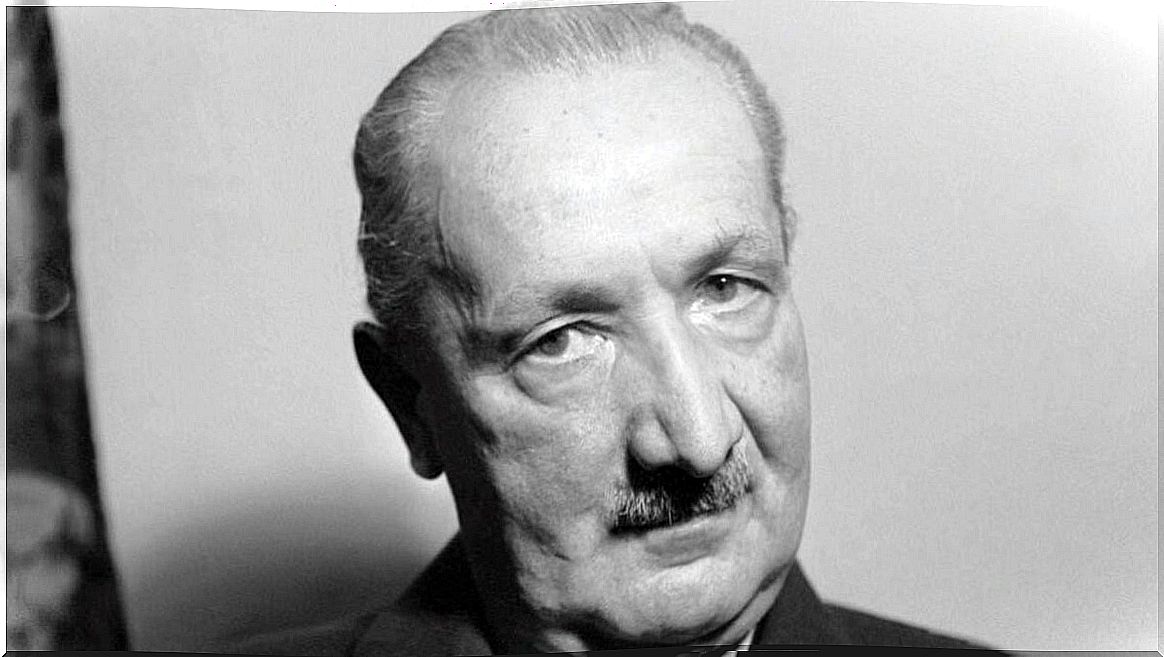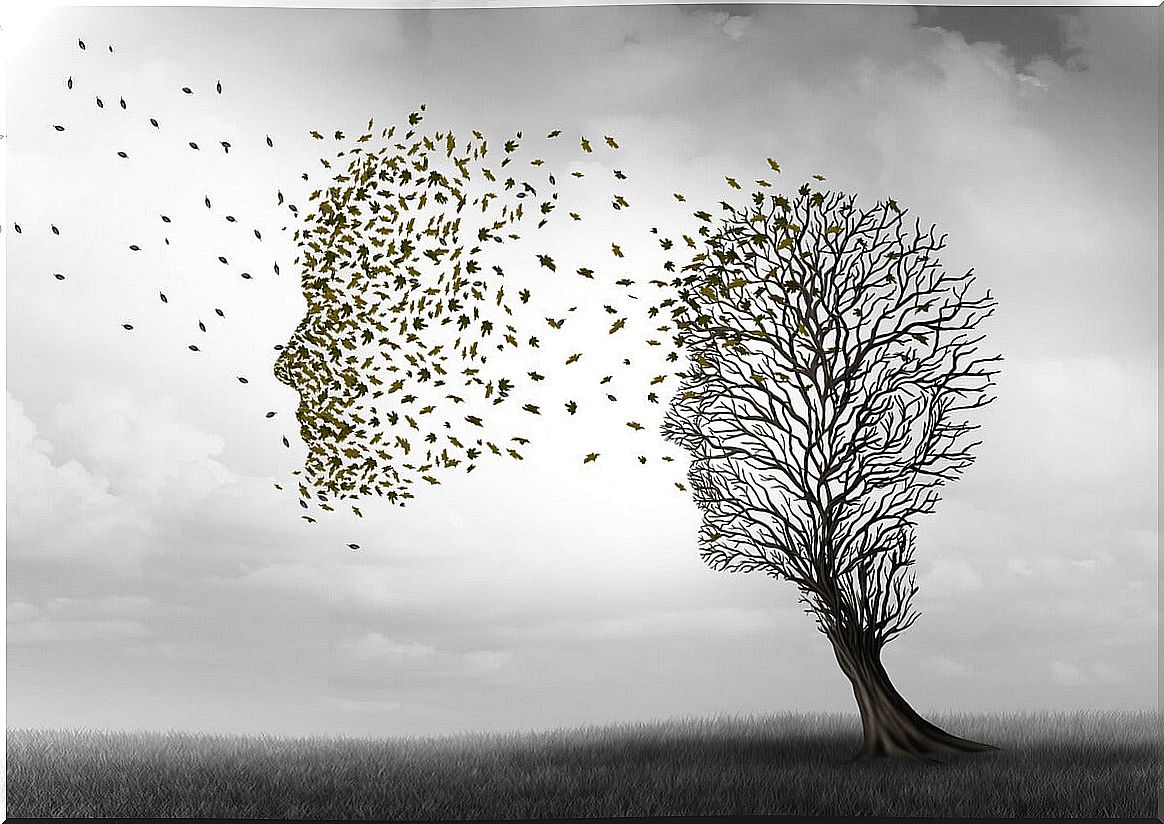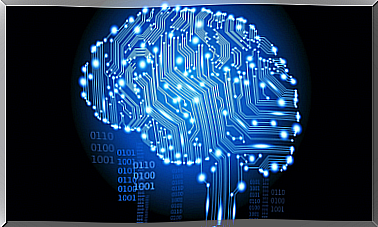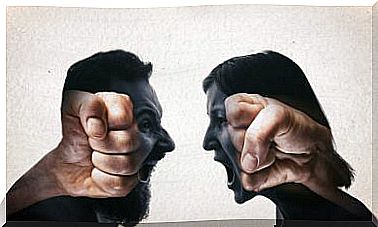Dasein, The Conception Of The Human Being According To Martin Heidegger

What exactly does it mean to “be in the world”? In what way do people manifest themselves in this reality? These types of questions were a constant in existential philosophy. One of its most emblematic figures, Martin Heidegger, chose the term Dasein to answer this and many other questions.
This German word can be translated as ‘to be there or sense of being’ ( da – ‘there’; sein – ‘to be or to be’). Dasein basically defines the relationship between us and the world and in turn with any purpose-oriented action. It is our conscience linking itself to everything that surrounds us.
If we are particularly interested in this concept, it is for a very specific reason: because it acts almost as an interface between psychology itself and philosophy. And the fact that this is the case is not accidental either.
Heidegger always hoped that his approach, his contributions and theories would favor a new way of exploring human suffering. So much so that, for many, the existential ontology that makes up a large part of his legacy allows us to explore such important aspects as the unconscious, loneliness and human anguish.

Dasein, “being-in-the-world” or the art of living in the here and now
Martin Heidegger is a magnificent rare bird in the philosophical context. Perhaps, for this reason, he is still considered today one of the most remarkable figures of the 20th century.
His work was always oriented to go beyond that reductionism that prevailed until now in philosophy. With works as relevant as Being and Time he exhibited something innovative: we cannot understand a person without taking into account Dasein , that being that goes beyond the sensorial and the reflective and that goes out into the world to relate to him.
Suddenly, Heidegger goes beyond that theoretical framework of science and introduces the concept of consciousness as something dynamic, as that part of ourselves that transcends the objective and the scientific to relate to the world and set purposes. These ideas were an indisputable basis for the development of existential-phenomenological psychology. We analyze it.
Heidegger and psychology
Martin Heidegger always showed a great interest in aspects related to psychology and psychiatry. It should be noted that, although he did not show great affinity for psychoanalysis, he did feel uneasy about many many aspects of psychodynamic theory (consciousness, subconscious, feelings …)
An example, we know that he maintained a close friendship with Medard Boss, a Swiss psychoanalytic psychiatrist who developed precisely a form of psychotherapy based on his theories, known as Daseinsanalysis. Heidegger, taught courses and seminars for more than 10 years talking about his concept of Dasein with the idea of giving a greater boost to psychology.
In his treatise El ser y el tiempo of 1927 he looked for several things. The first was to delve into the idea of individuality and the complexity that this entails. From the moment we conceive ourselves as individual beings, but at the same time immersed in an environment, projecting ourselves into everything we do, the inevitable existential suffering often arises. And that is where suddenly, the philosophical bridges the psychological …
Dasein : my essence as a human being is always in contact with the world
Heidegger conceives the human being as an entity in relation to things and the world. It does not speak of an existence in general and, in broad strokes, like that of other beings, other entities that make up nature.
The human being perceives himself in the following way: “ I am myself”, but only to the extent that “I am-with-the-world” . I am not an isolated entity, my reason for being and existing also includes everything that surrounds me and that is where I find my ends and purposes.
Also, another interesting aspect is introduced. The Dasein , rather than a reality, is a project. Each of us is full of infinite possibilities and our essence is also inscribed in each purpose. We project ourselves, we go beyond our physical envelope because consciousness transcends and expands.
We are not isolated entities, we are projects depending on the context in which we are, the things, people and circumstances that surround us. The world conditions our existence and no matter how much we separate variables for analysis, they rarely act in isolation. We are much more than the sum of our parts and the influence of the environment is also much greater than that of isolated stimuli.

Heidegger’s theory and flow experiences (being-in-the-world and the moment)
Being and Time is without a doubt the work that has had the most weight in the development of existential-phenomenological psychology. Thus, Heidegger’s concept of Dasein lays the foundations for various modern theories of the psychological field. We are not, therefore, before a philosophical entelechy without practical significance today, quite the contrary.
What’s more, we find its meaning in talking about the flow experiences defined by the positive psychologist Mihály Csíkszentmihályi. Remember, the state of flow is that dimension in which the mind is in a state of concentration and absolute well-being. It is knowing how to be present and allow our consciousness to flow, relaxed, but active at the same time, clinging to reality and united to our essences and identities.
The Dasein , meanwhile, lies our being in the world at present to make us transcend. It is allowing ourselves to be present, but at the same time connected with what surrounds us, feeling an existential purpose.
To conclude, it is always interesting to look back at figures so decisive for knowledge, such as Martin Heidegger. With him we learned to reformulate the concept of being beyond the metaphysical, his reformulations on the conception of the human being represented an advance for psychiatry, psychology and sociology.









